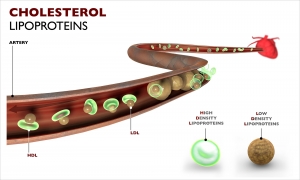The topic of “blood sugar” and health is usually connected to type 1 and type 2 diabetes. In fact, you may have been thinking diabetes the moment you read the word “blood sugar” just stated. There is an epidemic of diabetes in America and other countries around the world, however, we must not ignore the fact that blood sugar has a lot to do with many, if not, most disease processes.
Most American’s and other affluent nations around the world who consume lots of refined carbohydrates, animal protein, dairy, wheat, refined sugar, too much cooked food, processed foods, alcohol, energy drinks, sports drinks, fast food, etc. are living each day with high glucose levels that they are unaware of. The thought may be, well I am not diabetic so I do not have anything to worry about eating and drinking this way. What you and others may not know is that high blood sugar levels over a period of years will more than likely show up in some form of disease.
Chronic high levels leads to disaster
There is plenty of research showing that chronic high blood sugar levels in people over a period of many years is connected to diseases like cancer, auto-immune diseases, degenerative diseases, cardiovascular diseases, mental health disorders, bone and joint degeneration, etc.
The focus of this article will be on the relationship between the high consumption of meat, dairy and wheat and its effect on elevating your blood sugar. You can read the article, Sugar Obsession to get more of an analysis of how the other types of foods and drinks listed above effects your health.
The main sugar concept this article will discuss is called “advanced glycation end products,” also know as, AGE’s. The abbreviation AGE will be used throughout this article. Questions that will be answered are:
- What are AGE’s? What different types are there?

- What is the relationship between AGE’s and inflammation?
- What is the relationship between AGE’s and diseases like diabetes, Alzheimer’s disease and cardiovascular disease? We can spend time discussing others but these three categories of diseases will suffice.
- What are some blood tests to get done that are potential indicators that I am producing too many AGE’s that put me more at risk for developing these and/or other diseases?
- A Call To Action! New lifestyle habits that can help you to control blood sugar, improve your health and prevent disease!
The things you will learn about meat, dairy and wheat and their effect on producing high blood sugar, elevated AGE’s and the development of the selected diseases in this article may surprise you.
The irony is that organizations like the American Diabetic Association, American Cancer Society, American Heart Association, USDA, FDA and many others still recommend a dietary lifestyle that consists mostly of meat, dairy and wheat as the staple of our diets and too little intake of plant-based foods. Research has and continues to show how these foods are not helping us win the war on disease. We eat too high of an animal based and wheat based diet and it’s potentially sending us to the grave prematurely. This article will teach you some things that these organizations may not want you to know! Buckle up! Let’s go down “blood sugar lane” and see what these AGE’s are doing to us and our health! Meat, dairy and wheat have something to do with it!
-
What are AGE’s? What different types are there?
First, we must be clear that the primary substance that fuels our body is glucose. Every type of food that we consume breaks down into sugars for the body to utilize for energy and nourishment. So glucose is our friend, however, it can become our foe depending on what we are consuming every day.
So what are AGE’s? It is the biological process by which sugar binds to proteins and certain fats resulting in deformed molecules that do not function well. The reason these are so dangerous to our bodies is directly related to high blood sugar levels. Again, we produce these sugar molecules when we eat food that breaks down into glucose allowing our pancreas to excrete insulin so our cells can let the sugar in to energize and nourish us. The line is drawn when we consume foods that cause chronic high blood sugar. This is why we call them “advanced glycation end products.”
Something to remember is that the number of AGE’s floating around in the bloodstream is directly proportionate to how high or low your blood sugar is. You must do all you can to maintain a balanced blood sugar level.
The general list of foods listed in the introduction do cause sugar spikes but they often times metabolize quickly and these molecules are not stored in our organs and tissues as much as other food sources like meat, dairy and wheat products. This does not mean that refined food sources and toxic drinks are permissible since they cause problems in the body as well. This article wants to focus on food sources that cause longer lasting high blood sugar effects in body and this is where meat, dairy and wheat come in to the equation.
What different types of AGE’s are there?
There are two types:
- Endogenous AGE’s: are formed within the body and starts with blood sugar (glucose). Any food that increases blood sugar will produce endogenous AGE’s. Foods that increase blood sugar the most will trigger the greatest AGE formations.
For example, wheat increases blood sugar levels higher than some simple carbohydrates do like table sugar. Who knew that modern wheat products may be worse off than even a candy bar when it comes to long term sugar spikes. The body even develops an immune response when wheat is ingested causing certain antibodies to increase in number in our bloodstream, as a result, this increases inflammation in your body.
Fructose also increases the number of endogenous AGE’s in the body. There are many processed food products out there that contain high fructose corn syrup (HFCS). HFCS causes AGE formation several hundredfold than glucose alone. HFCS is found in fruit drinks, candy, condiments, sauces, canned foods, frozen foods, bagged foods, many so-called healthier wheat products, etc.
Make sure you pay attention to the ingredient list when buying anything pre-packaged. Anything with HFCS or wheat derivatives should be avoided at all costs.
The more we consume these types of foods, the greater amount of endogenous AGE’s are produced causing metabolic chaos in the body.
- Exogenous AGE’s: these are triggered by foods that enter the body when we eat them.
Ironically, the foods that do this at the highest amounts are meat, dairy and wheat products. For example, when you cook meats at high temperatures and eat them, the number of AGE’s in the bloodstream go up. The American Journal of Clinical Nutrition did a study showing this phenomena with diabetics. After consuming a meal with meat cooked at high temperatures the arteries in the diabetics were unable to relax and had large amounts of AGE’s and oxidative biomarkers in their bloodstream as well.
Animal foods that have higher amounts of saturated fat in them increase AGE’s when consumed. Cured meats like bacon, sausage, pepperoni and hot dogs are usually high in AGE’s. Anything deep fried will increase AGE production once ingested as well.
-
What is the relationship between AGE’s and Inflammation?
[/title][fusion_text] We hear so much about inflammation today and how it is connected to most disease processes. If you read more articles here in our Knowledge Center, you will notice that it comes up a lot. What has not been discussed is the relationship between AGE’s and inflammation.
We hear so much about inflammation today and how it is connected to most disease processes. If you read more articles here in our Knowledge Center, you will notice that it comes up a lot. What has not been discussed is the relationship between AGE’s and inflammation.
AGE’s trigger inflammation in your body. When your body has high levels of these sugar molecules that attach to proteins and fats in the cell, your cells become inflamed. So many in American society and other affluent nations around the world experience this systemic inflammation daily consuming high amounts of cooked meats, dairy, wheat and refined/processed foods.
The irony is that you do not feel the inflammation caused by AGE’s but it will eventually show up in some form of disease. You will come to see what some of these inflammatory biomarkers are answering question 4. The point cannot be stressed enough that this metabolic process includes many other diseases that are not mentioned in this article.
Let’s move into the relationship between AGE’s and a few selected diseases! This section will more than likely interest you the most! Keep in mind that inflammation is a part of this process!
-
What is the relationship between AGE’s and diseases?
This article is not intended to advocate for a completely plant based diet but we need to look at how consuming meat, dairy and wheat in high amounts effect our blood sugar levels and how it’s a part of why we are suffering from diseases like diabetes, Alzheimer’s and cardiovascular disease.
There are diet plans out there like the Ketogenic diet, Paleo diet, Atkins diet, South Beach diet, etc. that lean towards consuming higher amounts of dairy and animal protein, however, the most researched foods since the inception of nutrition science has been those on plant based foods, so a dominantly plant-based program with lower animal protein consumption is healthier long-term. To be fair, some people who are under the care of a trained physician utilizing the ketogenic and paleo diets have shown improvement in certain disease conditions. These cases are the exception and not the rule. People who eat more plant-based from a global standpoint live longer and healthier with minimal animal protein.
If you are going to continue to consume animal based protein, ensure that they are coming from wild caught sources and organically raised livestock. The overall macro-nutrient and micro-nutrient content are better than meat and dairy products that are commercially raised.
How blood sugar leads to disease
Diabetes
The protein and sugar molecules found in pasteurized dairy products are extremely difficult to breakdown. The lack of complete breakdown of these proteins and fats will increase blood sugar tremendously. In fact, the proteins (bovine products) in dairy products are the culprit that trigger insulin out of proportion to the sugar content in these foods. The amount of AGE’s circulating in the blood consuming dairy products rises because it forces the pancreas to work harder to bring down blood glucose levels. As a result, AGE’s increase in number because of high blood sugar and are stored in our organs and tissues that lead to diseases like diabetes.
The majority of protein found in dairy products is called, “casein.” Casein makes up 87% of dairy protein. Why should we be concerned about this protein? You may have guessed it already, it is connected to diabetes. In particular, this protein gets partially digested in the intestines and forces our immune system to attack these harmful pathogenic molecules and at the same our immune system attacks our pancreatic cells as well. This metabolic process is one of the leading causes of type 1 diabetes. Consuming dairy products may be one of the reasons type 1 diabetes is rising in our children since so many begin consuming dairy as early as infancy. Who knew that consuming dairy could lead to an auto-immune disease like type 1 diabetes!
Still to this day, the American Diabetic Association recommends diabetics to consume dairy products. The ADA’s refusal to make dietary modifications based on this new research on dairy products is an injustice towards diabetics, pre-diabetics and the general public. The main reason the ADA refuses to change the dietary guidelines regarding dairy is because one of their big financial supporters come form the Dairy Industry.
Modern wheat has become another issue in regards to the diabetes epidemic. Wheat is found in many processed foods but even the so-called healthy alternatives like whole-wheat bread and whole-wheat pasta are not a healthier alternative to processed breads, snacks or white pastas.
To give you an idea of how whole wheat bread is not a better alternative to white bread, let’s look at the glycemic index for a moment. If you were to consume two slices of whole wheat bread with some turkey meat on it, a typical blood glucose reading ranges between 140 to 180 mg/dl. The recommended range for blood sugar is 60 t0 90 mg/dl. Consuming just two slices of wheat bread with some animal protein can spike your sugar 2 to 3 times higher than recommended healthy levels. This high rise in blood sugar will automatically produce higher amounts of AGE’s in the bloodstream and attack your organs.
Wheat metabolism operates similarly to dairy products. You may ask: How so? Eating wheat products that spike blood sugars and increase AGE’s cause what is called, “glucotoxicity.” The actual damage done to pancreatic insulin-producing beta cells is due to high blood sugar and AGE production. So you run the risk of causing type 1 or type 2 diabetes consuming wheat products.
Currently, the American Diabetic Association, nutritionists, dietitians, etc. are still recommending diabetics to consume wheat products as healthier alternatives to refined carbohydrates. In reality, wheat products spike your blood sugar levels creating more AGE’s in the bloodstream than some simple carbohydrates.
To make matters worse, you cause damage to the pancreas by high blood sugar and AGE’s that trigger inflammatory markers, such as, oxidative damage, leptin, various interleukins and tumor necrosis factor. These inflammatory biomarkers are prevalent in pre-diabetics and diabetics. Unless you already have type 1 or 2 diabetes, if you consume lots of wheat products, your chances of developing diabetes goes up exponentially.
The role that meat plays in diabetes goes back to what was mentioned in section one under “Exogenous AGE’s.” When you cook meat at high temperatures it inhibits our body to break them down adequately increasing AGE’s in the blood. The saturated fat in animal products cooked at high temperatures add to this harmful metabolic effect. Frying meat products increase saturated fat levels and give you a double dose of AGE production because of the protein and elevated saturated fat levels in the food. This has a direct effect on your pancreas and is another cause of diabetes.
The ADA does not recommend eating less meat all together for diabetics and why do you think that is? You guessed it, the Meat Industry is another big financial contributor to the ADA.
As you can see, the American Diabetic Association’s dietary guidelines are not helping us win the war on diabetes!
Alzheimer’s Disease
In the last section on diabetes, you have seen how dairy, wheat and meat increase blood sugar and AGE’s and these foods have a similar metabolic connection to Alzheimer’s disease. Let’s look at what happens in the brain consuming these foods that lead to cognitive malfunction.
There are a few things we need to mention about diabetes in this section because the chances of getting cognitive disorders like Alzheimer’s disease goes up in diabetics.
Diabetics are more at risk of developing brain diseases because they already have trouble transporting glucose from the bloodstream to our cells. The brain does not have a glucose transport system which make it vulnerable to AGE’s. In the long-term this leads to peripheral neuropathy, damage to blood vessels and overall poor brain function. If you are diabetic, it is imperative that you eliminate dairy, wheat and meat as much a possible and consume more plant-based foods. What is toxic to your pancreas becomes toxic to your brain and increases the risk of Alzheimer’s and other cognitive disorders long-term.
Some researchers are calling Alzheimer’s type 3 diabetes. Unlike type 1 and 2 diabetes that effect the pancreas, this process inhibits normal energy metabolism in the brain, due to, AGE’s binding to proteins in the brain. So for the diabetic, poor sugar metabolism make their brains more vulnerable to Alzheimer’s disease. However, many non-diabetic Americans who consume large amounts of meat, dairy and wheat have high blood sugar problems that are often unnoticed since we are taught to consume these foods for better health, yet, it increases their chances of developing diabetes and/or Alzheimer’s disease.
These AGE’s that bind to proteins in brain cells and cause poor metabolic brain function literally changes the structure of the brain that lead to neuro-cognitive and neurological diseases.
AGE’s cause the blood to become thicker and harder limiting cells to carry oxygen to our tissues and organs. This metabolic defect comes at a price for our brains. Since the brain utilizes about 20% of available glucose in the bloodstream, our blood sugar levels are of utmost importance for proper brain function, especially, long-term healthy blood sugar levels. When they are too high, AGE’s then become destructive.
Long-term elevated levels of AGE’s circulating in the brain effect the production of two primary biomarkers that help to create Alzheimer’s disease.
The two biological markers in individuals who have Alzheimer’s disease are high levels of beta-amyloid plaque and neurofibrillary tangles. The brain naturally produces these beta-amyloid plaques but when sustained high blood sugar levels subsist for days, weeks and years with the diet mentioned throughout this article, the brain is unable to rid the brain of these beta-amyloid plaques.
In fact, there is an enzyme called an “insulin degrading enzyme” that functions to regulate insulin levels in the body but when you create high blood sugar spikes that produce AGE’s in the brain, this enzyme has to help the brain rid itself of beta-amyloid plaque and sacrifices the balancing effect of insulin levels. The battle between regulating insulin levels and ridding the brain of beta-amyloid plaque put you at risk for diabetes and Alzheimer’s disease at once.
Too much beta-amyloid plaque build-up in the brain caused by AGE’s effects the shape of brain cell synapses. Parts of the neurons that do the sending (axons) and receiving (dendrites) of our neurons become damaged and malfunction. The symptoms created by neuronal damage are memory loss, foggy thinking, behavioral changes, emotional outbursts, mild cognitive disfunction, Alzheimer’s, etc. This also creates colonies of neurofibrillary tangles that is connected to Alzheimer’s and the other symptoms just mentioned.
If you want to prevent Alzheimer’s disease or any other brain disease, then a good start would be to reduce animal protein consumption, dairy and wheat.
Cardiovascular Disease
Like we saw in diabetes and Alzheimer’s disease, AGE’s damage to pancreatic cells and brain cells also increase your chances of developing cardiovascular disease. Your pancreatic cells are also damaged by a process called, “lipotoxicity.” When your triglycerides are elevated by poorly digesting wheat and increases AGE production, these sugar molecules stick to cellular proteins and fats in your capillaries, blood vessels and arteries. We have been taught that whole wheat is heart healthy but when you look at it from the perspective of blood sugar, the idea of consuming wheat becomes an unhealthy choice to prevent or reverse cardiovascular disease.
 The dominant biomarker we use to refer to cardiovascular disease is “cholesterol.” The medical and nutrition industry has given “low density lipoprotein” (LDL) a bad name by placing it as the primary cause of heart disease. However, LDL cholesterol is not the issue, it’s a type of LDL cholesterol called, “very low density lipoprotein” (VLDL) and its particle size in the bloodstream that puts you at risk for developing cardiovascular diseases.
The dominant biomarker we use to refer to cardiovascular disease is “cholesterol.” The medical and nutrition industry has given “low density lipoprotein” (LDL) a bad name by placing it as the primary cause of heart disease. However, LDL cholesterol is not the issue, it’s a type of LDL cholesterol called, “very low density lipoprotein” (VLDL) and its particle size in the bloodstream that puts you at risk for developing cardiovascular diseases.
Large VLDL particles are taken up by the liver for proper disposal. Small VLDL particles are poorly recognized by the liver for metabolic removal, so they stay in the bloodstream longer. When these small VLDL particles become joined with AGE’s, they are more likely to become oxidized and potentially cause atherosclerotic plaques. If you consume foods like meat, dairy and wheat that cause higher AGE production, then the liver produces more small VLDL particles to enter the bloodstream putting you more at risk for developing cardiovascular disease.
Inflammation is also triggered by AGE’s in your cardiovascular system causing more tissue damage. Again, meat, dairy and wheat consumption creates this chronic condition long-term. When you combine oxidation, glycation, inflammation and small LDL particles you have a recipe for heart disease and these foods cause each of these metabolic conditions simultaneously.
As you can see, the diseases discussed in this section clearly have similar metabolic effects from the production of AGE’s. Keep in mind that this is only one biomarker that helps to create disease in the body and is not the sole cause but AGE’s do play an important role in their development. To get a bigger picture of the different ways our bodies breakdown at the cellular level, check out our article called, The Missing Link To Health. You will learn how most diseases can be linked to a metabolic disorder in our cells, the multiple reasons that contribute to poor cellular health and ways to improve cellular function. The purpose of this article shows you another metabolic benchmark in AGE production as a part of that process.
4. What are some blood tests to access my risk?
Below is a list of tests to get done and the ranges you need to be in to ensure your blood sugar levels are at normal levels and to reduce AGE production in the bloodstream. Remember, your body naturally produces AGE’s when you metabolize foods but you want to make sure they are produced in lower numbers daily and long-term as a preventative measure.
Triglyceride Levels: Anything over 100 mg/dl

High triglyceride to HDL ratio: over 1;1 or 2:1
Cholesterol levels and particle number (size):
Low HDL: less than 50 mg/dl for a man and less than 60 mg/dl for a woman.
Many LDL particles (over 1000)
Many small LDL particles (over 400)
How do you get your particle number count?
There are two ways:
- You can ask your doctor to measure the particle number by a laboratory method called a “nuclear magnetic resonance” (NMR) lipoprotein analysis.
- Testing apoprotein B (this shows your actual LDL particle count). You must make sure your physician has been medically trained on how to test for these numbers.
Hemoglobin A1c: you want to stay at 5.5 percent, anything over 5.5 indicates elevated blood sugar levels.
This tests shows you your average blood sugar levels in the last 60 to 90 days. The test may indicate that you are a diabetic or whether you are at risk for developing diabetes, therefore, it is used as a diagnostic test for diabetes.
Fasting glucose: over 90 mg/dl
Fasting Insulin: anything over 5
Testing your fasting glucose and insulin levels 30 minutes, 1 hr, and 2 hrs after consuming a 75 gram drink of glucose should be as follows:
Glucose should not rise above 110 mg/dl
Insulin should range between 2 and 5 IU/dl. Anything greater than 10 IU/dl is significantly elevated. At the 30 minute, 1 hr and 2 hr time frames, insulin levels should be less than 25 to 30 IU/dl.
Now you know the necessary tests to get done to give you an idea of how low or high your AGE production is and how it is effecting your health in a good or bad way.
You may want to get a glucometer to measure your blood sugar before and after a meal to see how your body responds to the foods you eat on a daily basis. This is helpful because it can allow you to make nutrition adjustments as needed. We all metabolize foods differently so this is an objective analysis of how well you are digesting your foods that influence your blood sugar levels.
You have made it to the last question! Let’s list some lifestyle habits you can do to get you on a better path to managing blood sugar while preventing or even improving the diseases mentioned in this article.
Take action and adapt these lifestyle habits to control your blood sugar!
Hydration: water is imperative when it comes to stabilizing blood sugar. There is enough Japanese medical literature that indicates drinking ionized alkaline water may be more bio-effective in helping to stabilize blood sugar. It is recommended that you consume a minimum of a gallon of ionized alkaline Kangen water daily.
Plant-based foods: eat low glycemic fruits, vegetables in all colors, dark leafy green vegetables, superfooods like those found in our Core Greens will help your body to sustain healthy blood sugar levels. It is becoming clear that for diseases like diabetes, Alzheimer’s disease, cardiovascular disease, cancer, etc. that a diet consisting of 80% plant-based foods can prevent, slow down or even reverse most diseases. Check out our 7 day whole food eating guide HERE and put this into immediate practice!
Healthy Fats: Raw nuts and seeds, Core EFA’s, organic flax oil, chia seeds, 1 tbs of coconut oil daily, pharmaceutical grade fish oil, wild caught fish are just a few to incorporate in your life daily. These fats will stabilize blood sugar and help to decrease the stickiness of your red blood cells.
Healthy grains: raw soaked oats in almond milk, quinoa, buckwheat, millet, brown rice, etc. You may be thinking that these may spike blood sugar and for some it does, however, they are loaded with fiber to help stabilize blood sugar. You may just want to limit these foods to a 1/2 cup daily. Use your glucometer to see how these foods effect your blood sugar.
Plant-based Digestive Enzymes: taking digestive enzymes during each meal will help to ensure better breakdown of your foods and potentially help reduce sugar spikes after a meal. Check out the Immune Defense Pack or Digestive Defense and make them a part of your supplement regimen.
Eating more raw foods: the more raw foods that you eat, the better you will manage your blood sugar and production of AGE’s. The raw plant-foods, raw oats, raw nuts and seeds is a good start. Some healthy food sources requires that you cook them, so eating 100% raw is not practical. However, the more raw foods you eat and reduce cooked food consumption, the better your blood sugar levels will be daily and long-term.
Meditation/Prayer: Doing meditation or prayer allows your body to reduce stress hormone secretion and assists in blood sugar regulation. When you are stressed, the production of cortisol increases and elevates your blood sugar. Daily de-stressing is a great way to reduce blood sugar and AGE production.
Aerobic Exercise: Spending 30 minutes to an hour every day doing some for of cardiovascular exercise helps to regulate blood sugar. It also balances out stress hormone levels that tend to elevate blood sugar levels. Overall, aerobic exercise benefits the body as a whole and prevents and improves many diseases.
By incorporating these lifestyle habits, you are on your way to managing your blood sugar levels, reduce AGE production, improving health conditions and/or preventing disease all together.
Here are some questions for you!
- What stood out to you in this article?
- What was intriguing about it?
- What was exciting or captivating?
- What concerns do you have?
- What are the implications of this article in relationship to yourself and your health?
- What new lifestyle habits are you going to make with this new information?
Answer these questions in the comment section at the end of this article! We appreciate your feedback, your questions and hearing how you are going to change your life for the better!

To life, health, longevity and happiness!!
John Nardozzi
Enzyme Nutritionist & Blog Writer
Bibliography
Amen, Daniel, M.D. Use Your Brain To Change Your Age. New York, NY. Crown Archetype, 2012.
Berger, Amy, MS, CNS. NTP. The Alzheimer’s Antidote. White River Junction, VT. Chelsea Green Publishing, 2017.
Campbell, T. Colin, PhD. The China Study. Dallas, TX. BenBella Books Inc, 2006.
Davis, William, M.D. Wheat Belly. New York, NY. Rodale Publishing, 2011.
Goh S, Cooper ME. The role of advanced glycation end products in progression and complications of diabetes. Journal of Clinical Endocrinol Metab 2008;93:1143-52.
Uribarri J, Tuttle KR. Advanced glycation end products and nephrotoxicity of high-protein diets. Clin J Am Soc Nephrol 2006;1:1293-5.
Bucala R, Makita Z, Vega G et al. Modification of low density lipoprotein by advanced glycation end products contribute to the dyslipidemia of diabetes and renal insufficiency. Proc Natl Acad Sci USA 1994;91:9441-5.
Stitt AW, He C, Friedman S et al. Elevated AGE-modified Apo B in sera of euglycemic, normolipidemic patients with atherosclerosis: relationship to tissue AGE’s. Mol Med 1997;3:617-27.
Moreira PI, Smith MA, Zhu X et al. Oxidative stress and neurodegeneration. Ann NY Acad Sci 2005;1043:543-52.
Nicolls MR. The clinical and biological relationship between type 2 diabetes mellitus and Alzheimer’s disease. Curr Alzheimer Res 2004;1:47-54.
Monnier VM, Battista O, Kenny D et al. Skin collagen glycation, glycoxidation, and crosslinking lower in subjects with long-term intensive versus conventional therapy of type 1 diabetes. Relevance of glycated collagen products versus HbA1c as markers of diabetic complications. DCCT Skin Collagen Ancillary Study Group. Diabetes Control and Complications Trial. Diabetes 1999;48:870-80.
Bengmark. J Parent Enter Nutr 2007 Sept-Octy;31(5):430-40.
Seftel AD, Vaziri ND, Ni Z et al. Advanced glycation end products in human male sex organ: elevation in diabetic tissue, site of deposition, and possibe effect through iNOS or eNOS. Urology 1997;50:1016-26.
Stitt, AW. Advanced glycation: an important pathological event in diabetic and age related ocular disease. Br J Ophthalmol 2001;85:746-53.
Negrean M, Stirban A, Stratmann B et al. Effects of low- and high advanced glycation endproduct meals on macro- and microvascular endothelial function and oxidative stress in patients with type 2 diabetes mellitus. Amer J Clin Nutr 2007;85:1236-43.
Goh et al. J Clin Endocrinol Metab 2008;93:1143-52.
Negrean et al. Am J Clin Nutr 2001;85:1236-43.
Ishibashi T, Kawaguchi M, Sugimoto K et al. Advanced glycation end product-mediated matrix metalloproteinase-9 and apotosis via renin-angiotensin system in type 2 diabetes. J Atheroscler Thromb 2010;17(6):578-89/
Frid H, Nilsson M, Holst JJ, Bjorck IM. Effect of whey on blood glucose and insulin response to composite breakfast and lunch meals in type 2 diabetic subjects. Am J Clin Nutr 2005 Jul;82(1)69-75.
Adebamowo CA, Spiegelman D, Danby FW et al. High school dietary dairy intake and teenage acne. J Am Acad Dermatol 2005 Feb;52(2):207-14.
Perlmutter, David. Grain Brain. New York, NY. Little Brown and Company, 2013.
R.O. Roberts, et al., “Association of Duration and Severity of Diabetes Mellitus with Mild Cognitive Impairment,” Archives of Neurology 65, no. 8 (August 2008):1066-73.
Perlmutter, David. Brain Maker. New York, NY. Little Brown and Company, 2015.
Suzanne M. de la Monte and Jack R. Wands, “Alzheimer’s Disease Is Type 3 Diabetes- Evidence Reviewed, “J Diabetes Sci. Technol 2, no.6 (November 2008):1101-13. Published online November 2008.
Yong Zhang and Heping Zhang, “Microbiota Associated with Type 2 Diabetes and Its Related Complications,” Food Sci. Human Wellness 2, nos. 3-4 (September-December 2013): 167-72, http://www.sciencedirect.com/scienc/article/pii/S2213453913000451.







Great job. John.
Thanks
Thank you Bill!! I appreciate you taking the time to read it.
Most breads contain wheat so we use breads that use sprouted grains. Is this much better than regular wheat breads?
Also when you do a search re. cooked versus raw, most articles suggest that cooking some foods is much better, as it softens fiber and makes them easier to digest. Your comment. We do use your products, but after reading this we need to reduce meat products.
Good question Carman. I primarily wanted to focus on certain types of wheat in the article. Yes, sprouted breads are much better since they have enzymes and nutrients still intact in them and make it easier to digest and utilize in the body. I would still monitor your sugar after 30 minutes to an hour after consuming these breads to ensure your sugar is not raised too high. You can use a glucometer to do so. Yes, cooking certain foods does increase nutrient values in them but temperatures matter when it comes to cooking food. Lower temperatures ensure better nutrient values then high temperature-long term cooking methods. As we age, we do lose our ability to digest foods well, especially if we have followed a typical western diet of too much cooked and processed food consumption. It will help you to break foods down easier, however, taking the Core pack and/or digestive health will help to ensure complete breakdown of these foods as well since their enzyme values are lessened when we cook food. I hope this helps. Thank you for reading the article.